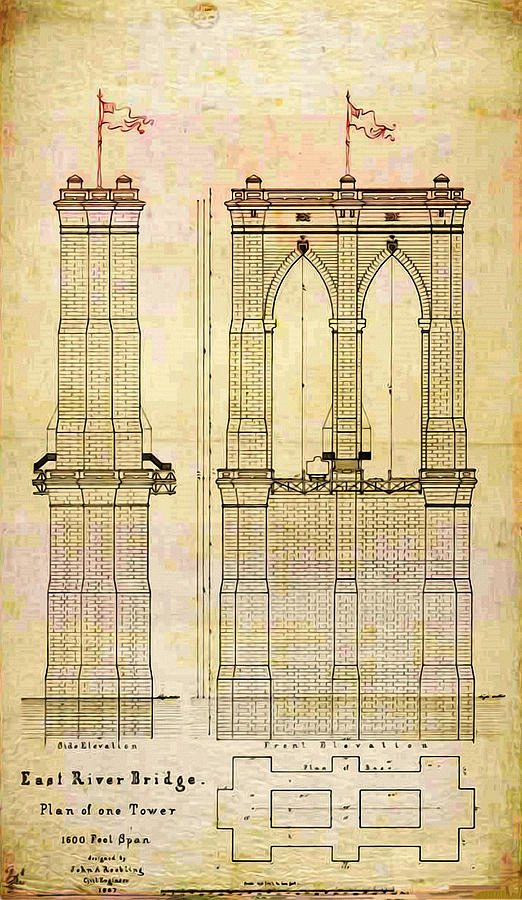Stereoscopic photography is a technique for creating the illusion of depth in an image via binocular vision.
This three-part blog looks at the stereoscopic photographs taken during the construction of the Brooklyn Bridge. The history of the construction of the bridge as well as the history of stereoscopic photography will also be explored.
PART ONE: From Agrarian to Industrial Nation
The day before the Brooklyn Bridge opened, merchants, in the then City of Brooklyn, prominently displayed a sign in their windows that read:
Babylon had her hanging gardens, Egypt her pyramid, Athens her Acropolis, Rome her Athenaeum; so Brooklyn has her bridge.
Juxtaposing the Brooklyn Bridge with these structural engineering marvels was not premature: the bridge is more than just a span over water because of its innovative design and functionality. The bridge also represents America’s transition from agrarian to industrial society, fostered by the nation’s greatest resource: immigrants. Perhaps the bridge’s greatest achievements are in its visually collective aesthetic qualities: those that anyone, regardless of education or economic status, can understand and appreciate.
The idea for a bridge spanning over the East River was first proposed in 1800 by General Jeremiah Johnson (who would later serve as mayor of Brooklyn), in a pamphlet that examined the topography of Brooklyn:
It has been suggested that a bridge should be constructed across the East River to New York. This idea has been treated a chimerical from the magnitude of the design; but whosoever takes it into their serious consideration will find more weight in the practicability of the scheme than at first sight he imagined.
In other words, the builder of a successful bridge over the East River will have to conceptualize something new and never before attempted. The bridge would have to be able to withstand the elements and not interfere with the busy maritime traffic. Johnson went on to convey, “Every objection to the building of the bridge could be refuted.” A bridge of this magnitude would require vast industrial resources. Industry was something many Americans did not envision for the young nation. This sentiment was echoed, one year after Johnson’s pamphlet was published, when President Thomas Jefferson, in his inaugural speech, conveyed that America’s best defense against the corruption of the old world (crowded fuming cities) was to remain an agrarian society:
“Kindly separated by nature and a wide ocean from the exterminating havoc of one quarter of the globe; too high-minded to endure the degradations of the others; possessing a chosen country, with room enough for our descendants to the thousandth and thousandth generation.”
Rousseau theorized that democracy has “natural limits.” The concept of a republic had been realized in smaller nations, but could it survive on the large scale that America presented? Jefferson realized that in order to assure the Union and benefit from the land, a national system of roads and canals would have to be built. Interestingly, one argument for a bridge over the East River had to do with national security and a safe, viable connection to the nation’s largest city. America had to become an industrial nation in order to survive. Industry breeds technology and technology breeds industry. The day the bridge opened, one article from the New York Times declared, “With the towers and anchorages completed, the stone age, as it may be conveniently called, gave way to the period of steel.” Stone and steel, the materials that comprise the Brooklyn Bridge, also make it a factual, visual representation of the nation’s shift to industry.
SOURCES:
McCullough, David. The Great Bridge. New York: Simon & Schuster, 1972
Trachtenberg, Alan. Brooklyn Bridge, fact and symbol. New York: Oxford University Press, 1965
Jefferson, Thomas, Koch, Adrienne, and Peden, William. The Life and Selected Writings of Thomas Jefferson. New York: Modern Library, 1998
Barnett, Clive, Low, Murray. Spaces of Democracy: Geographical Perspectives on Citizenship, Participation and Representation. London: Sage, 2004
“Making The Big Cables” New York Times 24 May 1883


2 comments